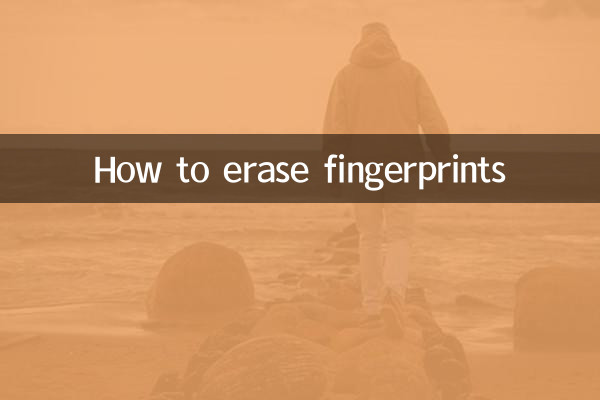How to erase fingerprints
In today's society, privacy protection and information security are receiving more and more attention. As a unique biometric feature, fingerprints are widely used in identity verification, access control systems and other fields. However, in some cases, people may need to know how to erase fingerprints to avoid personal information being leaked or misused. This article will combine the hot topics and hot content on the Internet in the past 10 days to provide you with a detailed analysis of fingerprint erasure methods, technical background and related legal risks.
1. Background and needs of fingerprint erasure

In recent years, with the popularity of biometric technology, the need for fingerprint erasure has gradually surfaced. The following are the hot discussion points on fingerprint erasure on the Internet in the past 10 days:
| hot topics | Discussion popularity | main focus |
|---|---|---|
| Security of fingerprint unlocking | high | Are fingerprints easily copied or erased? |
| Privacy protection technology | in | How to avoid misuse of fingerprint information |
| Legal and Ethical Controversies | high | The legality and moral boundaries of fingerprint erasure |
2. Common methods of fingerprint erasure
Here are several common fingerprint erasure methods, but be aware that some methods may involve legal risks:
| method | Principle | Effect | risk |
|---|---|---|---|
| physical wear and tear | Destroy the fingerprint surface through friction or chemical corrosion | Effective in the short term, but may regenerate | May cause permanent damage to skin |
| chemicals | Use strong acid or base to destroy fingerprint structure | The effect is significant, but irreversible | High health risk, may be illegal |
| Biotechnology | Fingerprint removal by surgery or laser | permanent removal | High costs and high legal risks |
3. Legal and ethical risks of fingerprint erasure
Fingerprint erasure is not a simple technical issue, but also involves legal and ethical controversies. The following is a summary of relevant legal discussions in the past 10 days:
| Country/Region | legal provisions | Penalty intensity |
|---|---|---|
| China | Article 280 of the Criminal Code | Up to 7 years in prison |
| USA | Identity Theft Act | Up to 15 years in prison |
| European Union | General Data Protection Regulation | heavy fines |
4. Alternative: Protect fingerprints instead of erasing them
Rather than risk erasing your fingerprints, it's better to take safer protective measures:
1.Use a fingerprint protective case: There are already protective films on the market that specifically prevent fingerprint copying.
2.Multi-factor authentication: Combined with other verification methods such as passwords and face recognition.
3.Regular cleaning: Prevent fingerprint residue from being used maliciously.
5. Summary
Fingerprint erasure is a complex and high-risk activity that is not only technically difficult to implement perfectly, but may also violate the law. Today, as biometric technology becomes increasingly popular, we should pay more attention to how to use fingerprints safely instead of simply erasing them. The prerequisite for protecting privacy is to abide by laws and ethical norms, and never lose the big for the small.

check the details

check the details